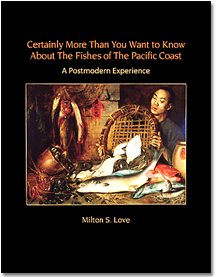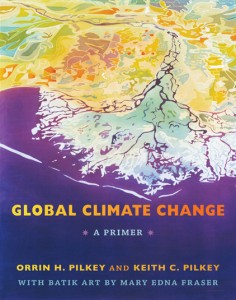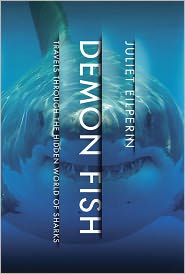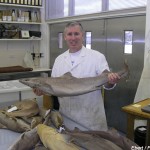 Dr. David Ebert is the Director of the Pacific Shark Research Center at Moss Landing Marine Laboratories. He is one of the world’s leading experts on shark taxonomy, and has described new species of sharks, skates, rays, and chimaeras. Dr. Ebert has written over 100 publications, five books, and dozens of IUCN Red List assessments. He generously agreed to review a new taxonomy guide, Field Guide for Sharks of the Genus Carcharhinus, for Southern Fried Science. He has provided a thorough list of citations backing up his points, but all opinions are his own.
Dr. David Ebert is the Director of the Pacific Shark Research Center at Moss Landing Marine Laboratories. He is one of the world’s leading experts on shark taxonomy, and has described new species of sharks, skates, rays, and chimaeras. Dr. Ebert has written over 100 publications, five books, and dozens of IUCN Red List assessments. He generously agreed to review a new taxonomy guide, Field Guide for Sharks of the Genus Carcharhinus, for Southern Fried Science. He has provided a thorough list of citations backing up his points, but all opinions are his own.
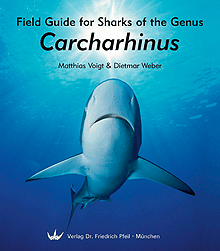 The shark genus Carcharhinus is one of the largest and perhaps most important genera of sharks, with many common and wide-ranging species. These sharks are mostly marine occurring from close inshore to the outer continental shelf and upper slope, but a few species inhabit estuaries and freshwater rivers and lakes. This group is by far one of the most important shark genera for fisheries globally, with various species being taken in commercial and sport fisheries, and in artisanal fisheries. Given the high profile and importance of this genus and the associated problems in identifying them to individual species in the field, an identification guide to the group would be most welcomed.
The shark genus Carcharhinus is one of the largest and perhaps most important genera of sharks, with many common and wide-ranging species. These sharks are mostly marine occurring from close inshore to the outer continental shelf and upper slope, but a few species inhabit estuaries and freshwater rivers and lakes. This group is by far one of the most important shark genera for fisheries globally, with various species being taken in commercial and sport fisheries, and in artisanal fisheries. Given the high profile and importance of this genus and the associated problems in identifying them to individual species in the field, an identification guide to the group would be most welcomed.
The book, “Field Guide for Sharks of the Genus Carcharhinus” by Matthias Voigt and Dietmar Weber, could have been that guide, with an exceptionally nice layout, beautiful illustrations, and tooth plates, but unfortunately the text does not stand up to the same high quality of the illustrations. The book cover is quite attractive and eye-catching, and upon initially thumbing through the illustrations and layout of the individual species accounts, I thought wow this looks to be an interesting and possibly useful guide to this shark group, even though I was unfamiliar with the authors, whom to be candid I had never heard of before.
Read More “Guest Post: A review of the Field Guide for Sharks of the Genus Carcharhinus” »

